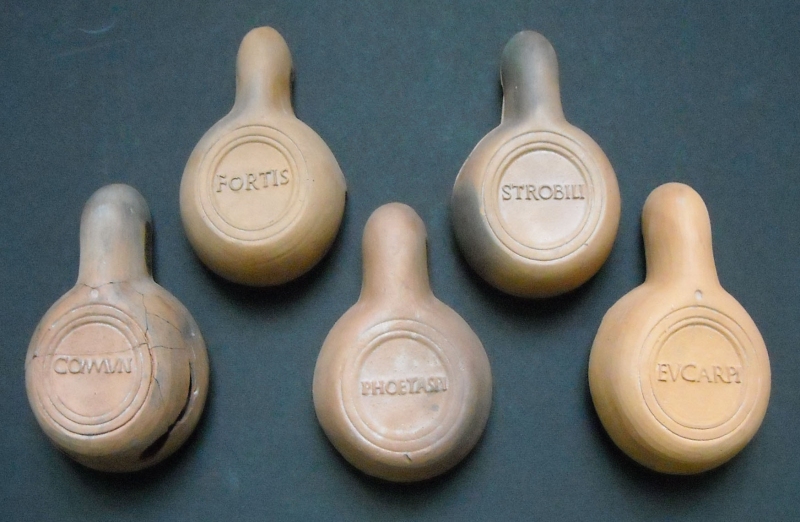One man's garbage is another's treasure. Italian
archaeologists digging in Modena, a city in central-northern Italy, have
discovered a spot near the ancient walls of the city where the Romans dumped
their garbage.
Since the area was almost entirely occupied by pottery workshops, the finding is
indeed important.
"There were vases, bottles, bricks, but most of all, hundreds of oil lamps, each
bearing their maker's name," Donato Labate, the archaeologist in charge of the
dig, told me.
The abundance of Firmalampen, or "factory lamps", confirms that Modena was
indeed the pottery centre where the oil lamps that lighted the ancient Roman
empire were made.
Here are some pictures from the dig:
|
|
|
|
This is the ancient Roman dumping. It was discovered during construction work to build a residential complex in Modena |
|
Firmalampen, or "factory lamps," were one of the first mass-produced goods in
Roman times and they carried brand names clearly stamped on their clay bottoms.
The ancient dumping in Modena contained lamps by the most famous brands of the
time: Strobili, Communis, Phoetaspi, Eucarpi and Fortis.
All these manufacturers had their products sold on the markets of three
continents.
Fortis was the trendiest of all pottery brands and its products were used up to
the end of the second century A.D.
"It was indeed a commercial success. Fortis gained such a name for its
lamps that its stamp was copied and reproduced throughout the empire. It was one
of the earliest examples of pirated brands," Labate said.

These "factory lamps" were found at sites in Modena, Italy. The lamps were among
the first mass-produced goods in Roman times, and they carried brand names
clearly stamped on their clay bottoms
The oil lamps and the other newly discovered objects will be displayed in a permanent show at the Archaeological and Ethnological Museum in Modena at the end of December 2008
|
|
|
|
Here are 14 lead bullets (glans plumbea) which were probably used in the Battle of Mutina in 43 B.C. During that battle, Decimus Brutus defeated the besieging Mark Antony with the help of Octavian, the future Roman Emperor Augustus |
The ancient dumping contained other important objects, such as this terracotta statuette depicting Hercules as he captures the Erymanthian Boar. |
Scholars have long thought that the fashionable Fortis originated from Mutina
— then called Modena — but until now no evidence had been found for that claim.
"We know now for sure that Fortis came from Mutina. The city was a major pottery
centre, a cluster of pottery workshops, as the variety of brand names on the
newly discovered items testifies," Labate said.
Labate added that kilns were located outside the city walls to prevent fires
from breaking out in the city.
The ancient dumping contained other important objects, such as a fine terracotta
statuette depicting Hercules as he captures the Erymanthian Boar, and 14 lead
bullets which were probably used in the Battle of Mutina in 43 B.C. During that
battle, Decimus Brutus, one of Julius Caesar's assassins, defeated the besieging
Mark Antony with the help of Octavian, the future Roman Emperor Augustus.
"This is an extraordinary discovery, since it provides unique archaeological
evidence which confirms historical accounts," Luigi Malnati, superintendent of
archaeological heritage in Emilia Romagna, told.

Firmalampen, or "factory lamps," were one of the first mass-produced goods in
Roman times and they carried brand names clearly stamped on their clay bottoms



